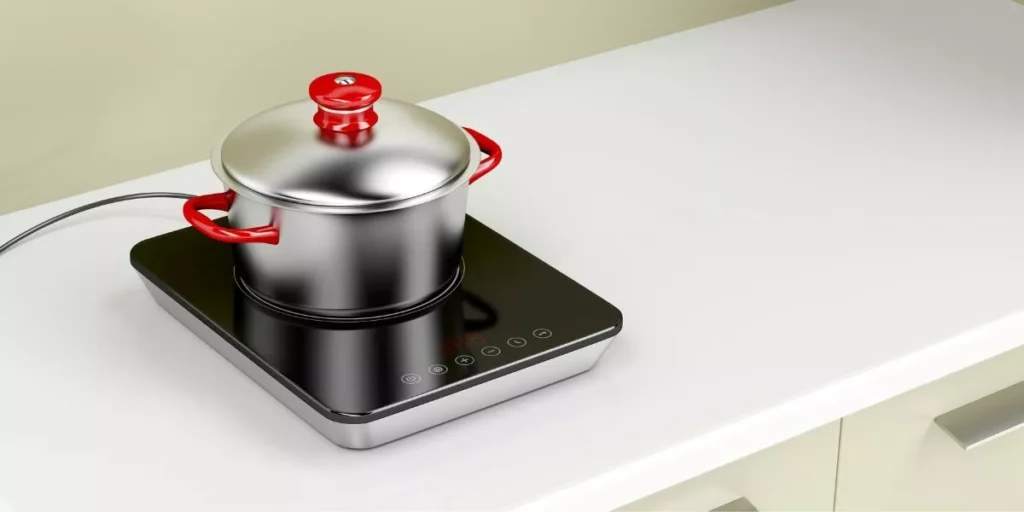
Have you ever wondered how induction cooktops manage to cook your food so efficiently? The magic lies in the way they harness electromagnetic energy to directly heat your pots and pans. But how exactly does this process work, and what makes it different from traditional gas or electric cooktops? Let’s peel back the layers of induction cooking and uncover the science behind this innovative technology that is revolutionizing the way we cook.
Basics of Induction Cooking
To cook efficiently on an induction cooktop, you need to understand how magnetic fields generate heat. Unlike traditional gas or electric stovetops, induction cooktops use electromagnetic energy to directly heat pots and pans. When you turn on an induction burner, an electric current flows through a copper coil underneath the ceramic surface, creating a magnetic field. This magnetic field induces a current in the metal of your cookware, generating heat. It’s crucial to use cookware that’s magnetic, such as cast iron or magnetic stainless steel, for the process to work effectively.
One key advantage of induction cooking is its speed. The heat is produced directly in the cookware, allowing for rapid heating and precise temperature control. Additionally, induction cooktops are more energy-efficient since they heat up quicker and lose less heat to the surrounding air. Understanding the basics of how induction cooktops utilize magnetic fields to generate heat will help you make the most of this efficient cooking method.
Understanding Electromagnetic Fields
Understanding electromagnetic fields involves grasping how magnetic forces interact with electric currents to create energy. In the context of induction cooktops, when an electric current flows through a coil beneath the cooktop’s surface, it generates a magnetic field. This magnetic field induces an electric current in the cookware placed on top of the cooktop. The interaction between the magnetic field and the electric current in the cookware leads to the generation of heat through a process known as Joule heating.
The strength of the magnetic field, determined by the amount of current flowing through the coil, directly impacts the efficiency and speed of heating. The alternating current in the coil constantly changes direction, causing the magnetic field to fluctuate rapidly. This fluctuation results in the rapid generation of heat in the cookware, allowing for precise control over the cooking temperature.
Heating Mechanics of Induction Cooktops
The heating mechanics of induction cooktops rely on the interaction between magnetic fields and electric currents to efficiently generate heat in cookware placed on the surface. When you turn on an induction cooktop, an alternating electric current flows through a copper coil beneath the cooktop’s surface. This current creates a fluctuating magnetic field around the coil.
When you place a compatible ferrous (magnetic) cookware on the cooktop, the magnetic field induces an electric current in the cookware due to electromagnetic induction. As a result, the cookware itself heats up rapidly due to electrical resistance, allowing your food to cook. Unlike traditional gas or electric stoves that indirectly transfer heat to the cookware, induction cooktops directly heat the cookware, making the process more efficient and precise.
This direct heating method also enables quicker temperature adjustments, giving you more control over your cooking.
Advantages of Using Induction Technology
When using induction technology, you benefit from faster and more precise cooking due to the direct and efficient heat transfer to your cookware. Unlike traditional gas or electric cooktops, where heat is generated indirectly and then transferred to the cooking vessel, with induction, the heat is generated directly in the cookware itself through electromagnetic induction. This results in quicker heating times, allowing you to start cooking almost instantly.
Another advantage of induction technology is its safety features. Since induction cooktops heat the cookware directly, the cooktop surface remains relatively cool to the touch, reducing the risk of burns. Additionally, induction cooktops often come with features like auto shut-off functions and pan detection sensors, making them safer to use, especially in households with children.
Moreover, induction technology is energy efficient, as it heats up faster and wastes less heat compared to traditional cooktops. This efficiency not only saves you time but also reduces your energy consumption, making it a more environmentally friendly option for cooking.
Trending Products














